4th Place at the SNC Championship

Last week I wrote that I put in a lot of effort to prepare for the SNC Championship. I don’t know the cause of my motivation. It may have been a mix of boredom and wanting to fall off the Pro Tour on my own terms rather than being pushed out the door due to another transition year.
Maybe I wanted to prove to myself that I still had it, whatever it is. Well as cliché as it sounds, the hard work paid off.
I managed to get fourth place and maybe could have done better with better clock management. Regardless, I’m very happy with my performance, and I’m happy I’m qualified for everything I can be at this point.
Apparently, I’m like a cockroach, and you’ll never truly get rid of me.
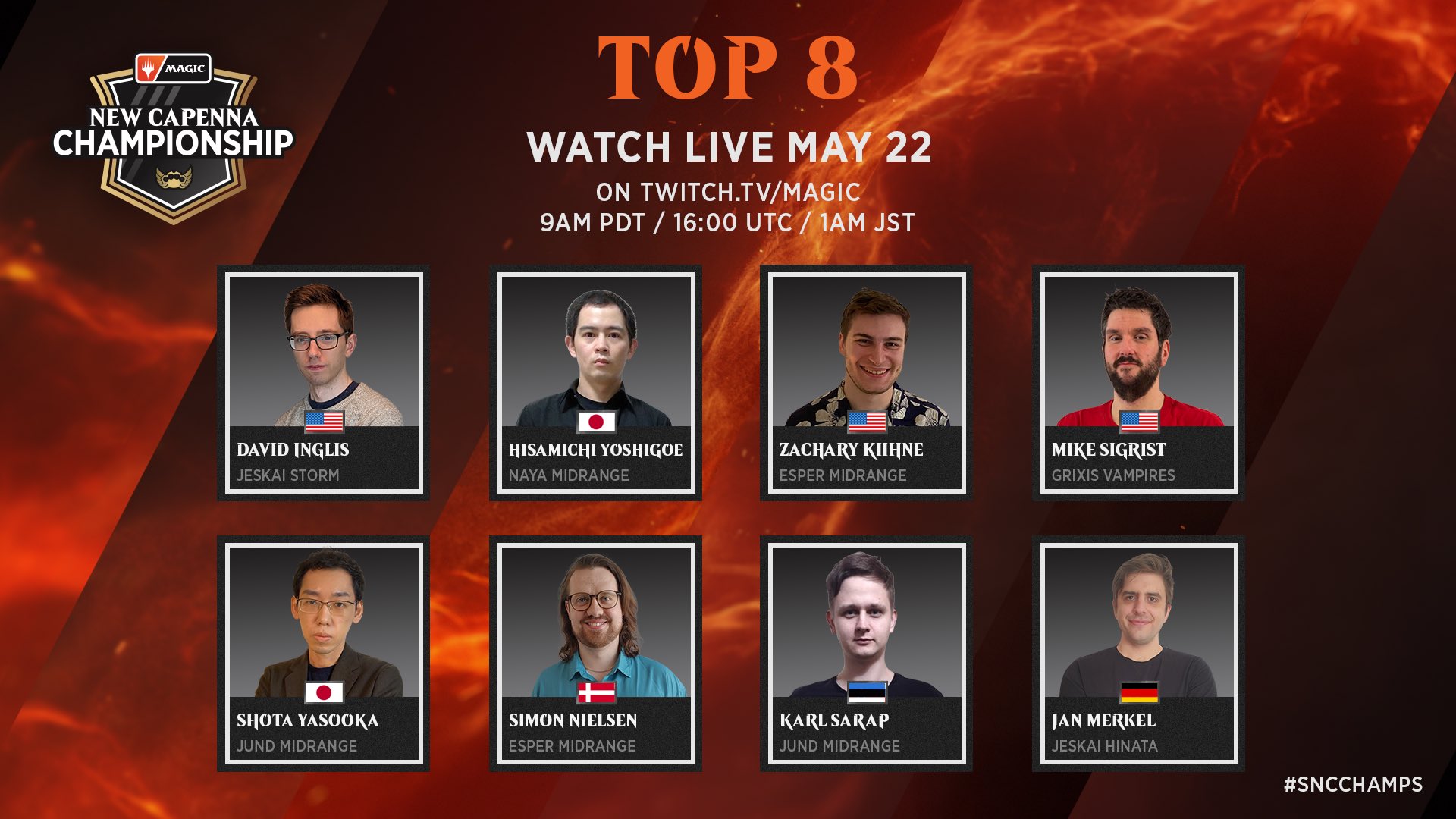
Rather than do a full deck guide, I’m going to talk about the journey this time. For lack of a better name, I tested with Team ChannelFireball.
We had a large group and got to put a lot of work in.
Our original goal was to focus mostly on Standard.
Standard was the format of the Top 8, and therefore you need more Standard wins to win the event.
In general, I think this is the correct strategy, but in retrospect, the dynamics of the team mostly fell into two categories. People were in tight Worlds races and could earn that spot with Swiss wins. Others wanted to qualify for the first paper Pro Tour.
If we looked at this a little more closely, we probably should have focused more on Historic as the Swiss portion was eight rounds of Historic compared to seven rounds of Standard.
That said, bigger edges were to be gained in Standard, so we focused there mostly.
Our plan for the SNC Championship was to get Historic done
Our plan was to get Historic done within the first week of our two-week period and focus the last days on Standard.
Quickly, we realized Ledger Shredder was an obscene card in Phoenix and especially in mirrors. Symmetry Sage, buffed for Alchemy, also seemed like a reasonable-rate creature.
It not only made itself three power, but it would pump Ledger Shredder and Dragon’s Rage Channeler, as well.
We decided to remove some of our other creatures and fit in the new cards.
We realized before the event that our Historic deck was a few cards off, and we were pretty hard on ourselves about it. Our plans didn’t mesh all that well, and we had too few ways to interact with Ledger Shredder.
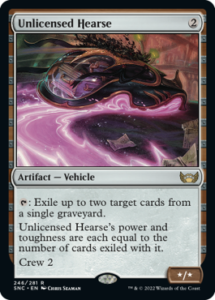
While we figured out Unlicensed Hearse and Ledger Shredder were must-have cards, we should have played a few matches of the mirror before submission.
Our deck would have looked much different—an extra Fry, maybe a Strangle, and definitely more Crackling Drake.
I have always hated Cracking Drake because I think it’s easy to lose with a clunky postboard game plan, but it made sense with a bunch of Unlicensed Hearses in everyone’s deck and Drakes were a good way to win those sloppy games.
As registered, I mostly hit the jackpot for match-ups playing against Auras three times and only two mirrors, both of which I was able to win by just embracing the pool of cards I had. Trying to play it as aggressively as possible to shorten games, rather than play longer grinder games when I was at a deck disadvantage.
As far as Standard was concerned, we just played and played and played.

We wanted to find out what interactions and cards were good and what cards underperformed.
Ob Nixilis was number one on our underperformer list, at least in terms of how heavily played it was. Tenacious Underdog was another one. We’d see tons of four-ofs, and it made sense that it’s a card you want to draw exactly one of, if any.
Early on we had Runes and Esper pegged as the best decks and the decks to beat. This wasn’t news to anyone else either. Both decks had been performing well, especially Esper, as it was winning every tournament.
What was strange was we felt the Runes match-up was fairly poor for Esper. Runes was overperforming for us, and we determined it was the deck to beat.
I tried different Runes packages with Esper, including 4 Archon of Emeria out of the sideboard, but it wasn’t enough.
Runes was too resilient, and the addition of 4 Fable and 4 Skyclave Apparition in the sideboard made it impossible to lean on Archon.
During SNC Championship Grixis was our frontrunner

Grixis was a deck that Reid Duke worked on, and I remember watching him stream it for the first time.
The deck was much different, but it stood out to him as something that had potential.
While we continued to work on Esper, Runes, and a variety of other things, some of which you can likely find on Andrew Cuneo’s YouTube channel, Grixis stood out, specifically against Runes. The data had us over 60% in the match-up, which made us ecstatic.
We had a deck that beat the deck we considered the best deck.
While we continued to work on other decks, Grixis was our frontrunner for a good 4-5 days before deck submission. We noticed a couple of reasons why Grixis was better than other midrange decks.
The first is cheap interaction. We had all the best cheap interaction in the format.
Voltage Surge and Ray of Enfeeblement were both incredible tools to interact in this metagame.
Ray was good against both Runes and Esper, and Voltage Surge hit that key four-toughness threshold of killing most things we cared about in the format.
In addition, our deck was good against these cards.
Voltage Surge couldn’t kill our top end in Evelyn, the Covetous, and Ray was a dead card.
Additionally, Kai brought up the point that we were one of the few teams to play Annul in our sideboard at the event.
Annul is a premium sideboard card in this format.
It counters the most important card out of Runes in Showdown of the Skalds, but it also has a ton of targets out of decks playing Fable of the Mirrorbreaker and Esika’s Chariot.
It even came up big against some other decks like a The Kami War deck that had tons of targets.
This Standard format is heavily slanted towards being on the play. Without cheap interaction you don’t have ways to slow down the opponent’s decks.
One of the biggest flaws with stock Esper lists was that their curve started at two mana, which is unacceptable in this format.
You need to be able to break up an opponent’s curve to win


You need to be able to break up an opponent’s curve to win as once the snowball starts rolling downhill, it’s impossible to stop when it gets out of hand.
We weren’t sold on our Esper match-up with Grixis.
Our data had us behind in the match-up, and in playing sets, it felt hopeless at times. Once their snowball started rolling, it was too difficult to stop.
As we played more, we had some perplexing results.
One night I played six or seven matches of the match-up and won every single one of them. I went to bed happy with Grixis and content to lock it in.
I’d wake up and play the match-up for a few more matches and lose every single one of them.
It was a super-swingy match-up that was likely a coin toss. The thing is, it’s not a coin toss for one simple reason.
Our deck was off the radar and people would not know how to play, and most importantly, mulligan against us. In house, we knew what to do. We got better at playing the match-up from both sides.
It’s hard to understand how much this changes when even the best players in the World have to make tough decisions on the fly with no experience.
The night before submission, Sam Pardee said he wanted to try something. He played Runes and won. He was getting confident that the match-up in reality is bad for Grixis despite our data.
So what changed?


Most of the time we were playing the match-up from the Runes side with a predetermined sideboard plan of bringing in tons of removal.
Fable of the Mirror Breaker engine was unbeatable once it got online for Runes.
Our instinct was to make sure it didn’t happen from the Runes side and try to out midrange the Grixis deck like we were doing against the Esper deck. It didn’t work, though.
Sam’s plan was to not sideboard at all on the play and to put in a small amount of removal on the place since it was more likely they’d be able to get Fable online when Grixis was on the play.
For the day of deck submission, some of the team members had a little meltdown. We also had a Jund Treasures deck designed by Raph Levy that kept winning despite looking not so hot.
We spent our time divided on working on the treasures deck and trying to fix this Grixis deck that at points in time we thought was incredible against the field and at other points in time it had no good match-ups. When deck submission rolled around, a group of people were convinced that our data may have been flawed due to bad sideboarding.
They wanted to default to Runes, which we thought was the best deck in the format.
I didn’t know what to do, so I did what any rational person would do.
I challenged Sam to a match of Grixis against Runes.
If I won with Grixis, I’d play Grixis. If I lost, I’d submit Runes.


Okay, maybe it’s irrational.
This is a classic flaw that even the best of us struggle with. Recency bias is tough to ignore, especially, if there’s a variable change.
I felt in my heart that Grixis was correct as I was most comfortable playing it, and I was probably going to register Grixis.
It was that feeling you get, when you think you’re split on something, and you tell yourself that you’ll flip a coin for it. Then you toss the coin and you know in that split second what you want to choose.
That’s how I felt during that match with Sam.
Sam got mana screwed in one game, and I think he lost another straight up. Regardless, I submitted Grixis about an hour before submission.
I laid in bed for that hour wondering if I should change my mind and thought all my options were fine and that it didn’t matter what I chose. When I felt like this in the past, I didn’t do well.
The data is in, by the way. Grixis won nine out of ten matches against Runes in the event. All of our concerns and data were wrong. We did much better than expected against Runes.
As for Esper, 73% in a sample of 19 is what I see here.
As what happens every time you have a solid deck, it does better against opponents who don’t know the match-up than it does in house.
Overall, I was happy with our preparation, but there’s always stuff that could improve.
A flaw of mine is to trust the process.


I almost scared myself into playing Runes, a deck that truly underperformed in the event.
I probably would have been upset for a day or two and moved on having done poorly. Instead, I’m getting excited to play the World Championships.
I didn’t think I had it in me to get back there as I just don’t play as much these days. I proved to myself I still have some gas in the tank—hopefully, enough to take down Worlds.
Thank you for reading, watching, and supporting me.
Image Copyright: (c) 1995-2020 Wizards of the Coast LLC, All Rights Reserved











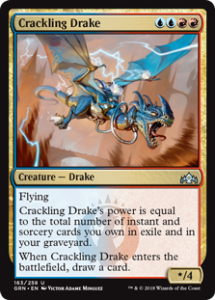
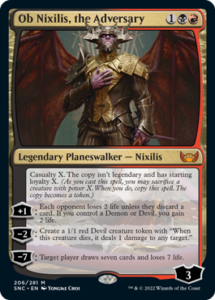

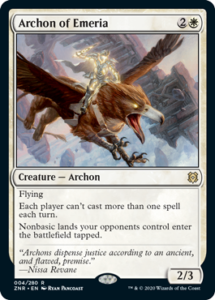

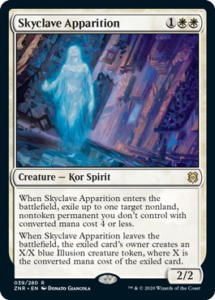





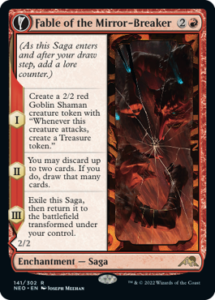



Hi Mike! Congrats!! Can you share a sideboard guide of this deck? Many thanks!
Hey! Thanks!
I wrote an updated list with some experimental changes we didn’t get to test much, and sideboard guidelines that will be out later this week I’d guess.